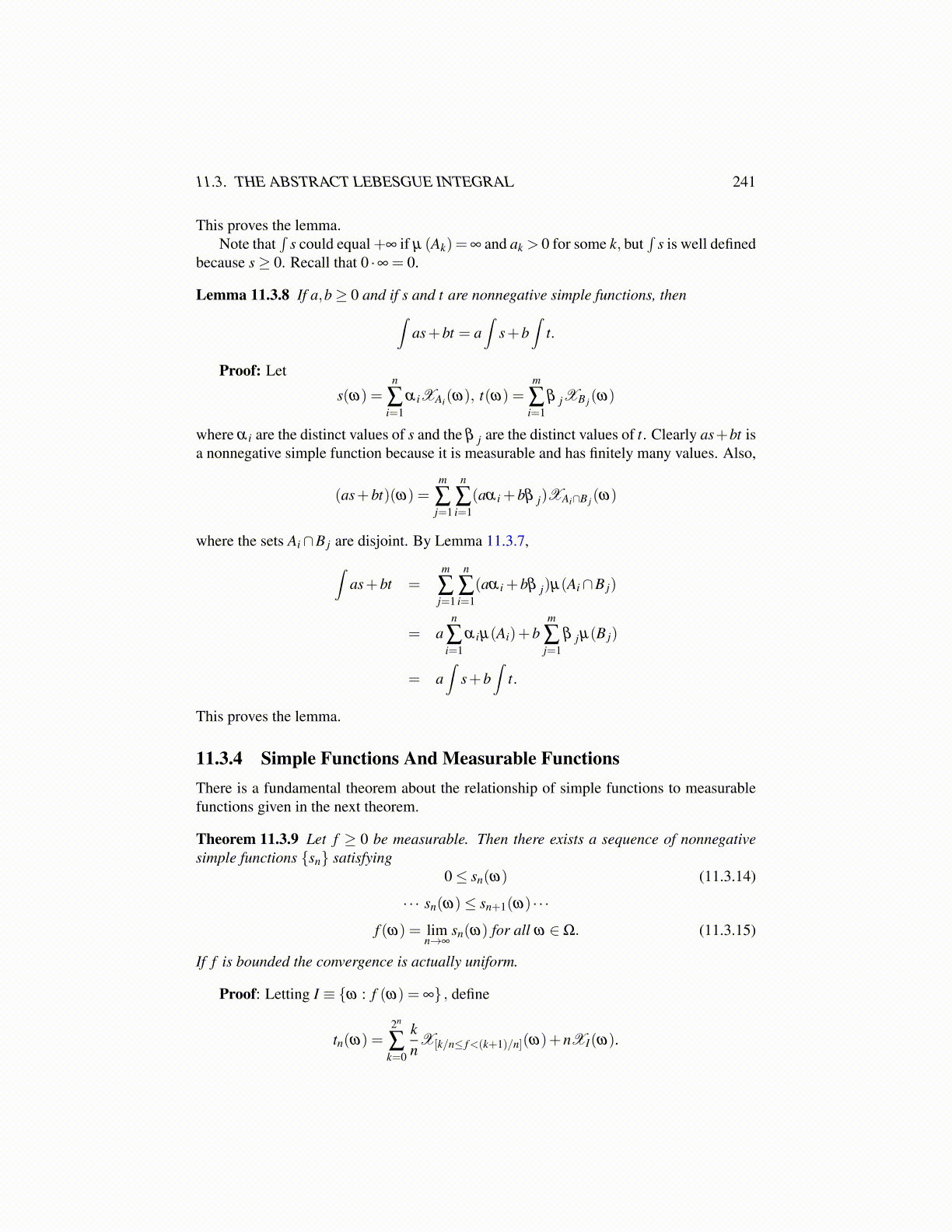
11.3. THE ABSTRACT LEBESGUE INTEGRAL 241
This proves the lemma.Note that
∫s could equal +∞ if µ (Ak) =∞ and ak > 0 for some k, but
∫s is well defined
because s≥ 0. Recall that 0 ·∞ = 0.
Lemma 11.3.8 If a,b≥ 0 and if s and t are nonnegative simple functions, then∫as+bt = a
∫s+b
∫t.
Proof: Let
s(ω) =n
∑i=1
α iXAi(ω), t(ω) =m
∑i=1
β jXB j(ω)
where α i are the distinct values of s and the β j are the distinct values of t. Clearly as+bt isa nonnegative simple function because it is measurable and has finitely many values. Also,
(as+bt)(ω) =m
∑j=1
n
∑i=1
(aα i +bβ j)XAi∩B j(ω)
where the sets Ai∩B j are disjoint. By Lemma 11.3.7,∫as+bt =
m
∑j=1
n
∑i=1
(aα i +bβ j)µ(Ai∩B j)
= an
∑i=1
α iµ(Ai)+bm
∑j=1
β jµ(B j)
= a∫
s+b∫
t.
This proves the lemma.
11.3.4 Simple Functions And Measurable FunctionsThere is a fundamental theorem about the relationship of simple functions to measurablefunctions given in the next theorem.
Theorem 11.3.9 Let f ≥ 0 be measurable. Then there exists a sequence of nonnegativesimple functions {sn} satisfying
0≤ sn(ω) (11.3.14)
· · · sn(ω)≤ sn+1(ω) · · ·
f (ω) = limn→∞
sn(ω) for all ω ∈Ω. (11.3.15)
If f is bounded the convergence is actually uniform.
Proof: Letting I ≡ {ω : f (ω) = ∞} , define
tn(ω) =2n
∑k=0
knX[k/n≤ f<(k+1)/n](ω)+nXI(ω).